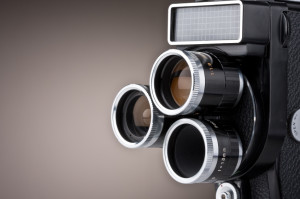When I did the Laban Movement Analysis Program at the Dance Notation Bureau in the mid-1970s, we were required to document our final projects using two extension systems: simplified Labanotation (motif writing) and film. The latter documentation was accomplished with a small super 8 camera, a mode of recording that is now obsolete.

Several years later, Irmgard Bartenieff and I purchased the first videotape equipment for the Laban Institute. We bought Sony Betamax because of its high quality. Almost overnight, this equipment became obsolete, because the American market wholeheartedly went for VHS – the quality was not as good but it was cheaper.
Nevertheless, I have been a devoted user of videotape recording ever since for one reason and one reason only – the power of the rewind. For detailed analysis of movement, the capacity to replay brief actions multiple times is invaluable.
That is why I am sorry to see VHS going the way of super-8 and Betamax. It is true that digital recordings have higher resolution and can be played on computers and projected so that the moving images are more life size. But the discretionary control with rewinding is more finical and, what is worse from my point of view, it is not possible to see the movement in reverse, as one can with videotape. This makes relocating fleeting actions much more difficult. Not insurmountable, but more difficult.
This short history reiterates the strength and weakness of extension systems. When doing live movement observation, the movement disappears as it is occurring. Even when a movement sequence has been “set” and can be repeated, it is never exactly the same. This is where mechanical recording devices become helpful through the power of the rewind. Yet as each new device adds functions, others are lost.
“Extensions may indeed be powerful,” Kaoru Yamamoto writes, “yet typically not remarkably flexible or versatile.”
For example, the Movement Pattern Analysis community has found that we do not get good inter-observer reliability results when analysts work only from videotape. However, we do get good results when analysts observe the live interview first, in the flesh, and use the videotape of the interview for additional coding. We came to this conclusion after consultation with an expert from the Educational Testing Service. She observed our practice and concluded that something “flies through the air” in live observation that is not replicable in a filmed recording of movement. Her conclusion substantiates Edward Hall’s view, “No matter how hard it tries, the human race can never fully replace what has been left out of extensions in the first place.”
